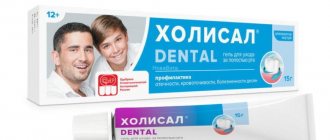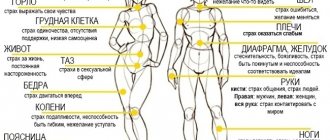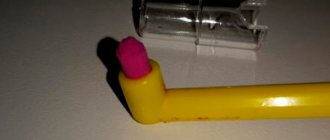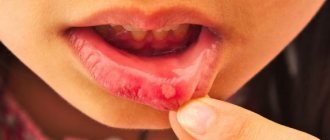Swelling in the mouth, the presence of painful ulcers and white plaque, inflammation of the gums and fever - all this may indicate the presence of stomatitis. This disease is diagnosed in patients of any age, and the fight against it often becomes difficult and lengthy. Dentists consider miramistin for stomatitis to be one of the best medicines. What is its peculiarity, how is the drug used correctly, and at what age is its use recommended?
How is stomatitis diagnosed?
The disease is manifested by the presence of inflammatory processes on the oral mucosa, which is caused by pathogenic microorganisms. Stomatitis has several forms of manifestation. Each of them has different symptoms. It depends on the reason for the development. One or another type of disease can be diagnosed based on the following symptoms.
- When stomatitis is of viral origin, the patient develops a high temperature. The oral mucosa becomes covered with ulcers. The lymph nodes, which are located in the lower jaw area, become enlarged. Very contagious.
- The traumatic origin of the disease is accompanied by swelling and soreness of the oral cavity. The child becomes whiny and refuses to eat. The temperature may rise in rare cases. This type of stomatitis is not contagious.
- With candidal stomatitis, the oral cavity is completely covered with a pronounced white coating. There is pain when eating. The temperature is rising. The disease is contagious.
- The bacterial type of disease is most often provoked by staphylococci and streptococci. At the beginning of its development, it manifests itself as redness and swelling of the gums. Next, the oral cavity becomes covered with ulcers, which cause a painful syndrome. Children may develop a fever. Fever is rare in adults.
- The allergic type begins with swelling and inflammation of the gums. Elevated temperature may not always be present. Easily turns into another form of stomatitis. For development, it will be sufficient for viral or bacterial agents to enter the oral cavity.
In addition to the types described above, so-called symptomatic stomatitis is sometimes diagnosed. It appears as a symptom of another disease.
Types of stomatitis depending on age
Dentists note a certain pattern between the patient’s age and the type of stomatitis. Children are most often affected by the disease. This is due to the structural features of the child’s mucous membrane, which is formed gradually, and therefore has its own characteristic features.
- Children under one year of age often develop the fungal type (thrush). This is due to the slightly acidic or neutral reaction of saliva, which creates favorable conditions for Candida fungi.
- From one year to three years - the viral type. Saliva loses its protective properties. The content of lysozyme, a substance that fights pathogens, decreases.
- Until the age of seven, local immunity declines. The child becomes susceptible to a bacterial type of disease.
- The active development of immunity before the age of fifteen becomes the cause of an allergic type of stomatitis.
Most often, the medicinal antiseptic Miramistin is prescribed to combat stomatitis. Miramistin for stomatitis has proven itself well for patients of any age. The drug is approved for use from the first days of their life and for nursing mothers.
Features of use in children
"Miramistin" for stomatitis in children is used from the age of three, mainly as a spray. The course of treatment lasts from 4 to 10 days. The dosage depends on the age of the child:
- 36 years. 3-5 ml per procedure. Spray once 3 – 4 times a day.
- 7 – 14 years old. 5-7 ml at a time. Press the sprayer twice up to 4 times a day.
- From 14 years old. 10-15 ml per application. Three or four presses 3 to 4 times a day.
The product is intended for external use only and should not be swallowed.
Is Miramistin effective for stomatitis?
The drug has antimicrobial and bactericidal properties, destroying gram-negative and gram-positive microflora. Under the influence of Miramistin, the proliferation of fungi is inhibited, stopping the development of the disease. The medicine helps to form an adequate and correct immune response. As a result:
- local immunity significantly enhances its protective properties;
- the infection stops spreading to healthy tissue;
- already damaged tissues are restored faster;
- the drug helps to adsorb (collect) pus and remove waste products of pathogenic microorganisms;
- stops inflammatory processes.
Miramistin is available for sale in three forms: as a spray, solution and ointment. This helps the patient choose the most convenient option for using the drug.
A big advantage of the drug is its good compatibility with other antibiotics that are taken to increase tissue regeneration, as well as the taste of the drug. Many medications that are intended for treating the oral cavity are produced with an unpleasant taste. This becomes a problem when using them for children. Reflex vomiting and increased salivation can create a dangerous situation for the child’s health. Miramistin is distinguished by the absence of antipathetic odors and tastes. The solution is more similar in taste to plain water, which greatly simplifies the procedure for using it for children.
The drug is also suitable for preventive purposes when one of the family members already has the problem. To do this, the oral cavity is sprayed with Miramistin solution 2 times a day, but the drug cannot be used for more than 10 days.
The use of the drug does not always guarantee a positive result in treatment. Miramistin will not bring the expected result for allergic stomatitis. Treatment may fail if the disease is caused by dental problems. These include: the presence of periodontal disease or tartar, advanced caries, as well as the presence of other inflammatory processes. First you need to eliminate the original cause. Then just start fighting stomatitis.
Action
The medicine is effective against a wide group of pathogenic microorganisms. It has a detrimental effect on:
- viruses;
- aerobic and anaerobic bacteria;
- protozoa;
- fungi.
The drug has antimicrobial, regenerative and anti-inflammatory properties. He is capable of:
- strengthen local immunity by activating macrophages and phagocytes;
- prevent infection of wounds and burns;
- accelerate cell regeneration;
- absorb pus, promote its rapid discharge and the formation of a dry scab;
- prevent the spread of infection to healthy tissue.
The medicine is effective against a wide group of pathogenic microorganisms.
Additional Information! "Miramistin" is used not only for stomatitis, but also in traumatology, surgery, otolaryngology, gynecology and to prevent sexually transmitted infections.
The solution is not absorbed through the skin and mucous membrane. It does not irritate the integument, does not destroy cells and marginal epithelization of wounds. When taken simultaneously with antibiotics, it enhances their effect.
Side effects and contraindications
Side effects from using the drug include the risk of developing an allergic reaction. It occurs very rarely and most often affects young patients. A burning sensation may occur during use. This phenomenon is considered normal and does not require refusal from further use.
Contraindications include individual intolerance of the body to the components of the drug, which occurs in the presence of certain types of allergies and dermatitis. In any case, Miramistin should be taken under the supervision of a specialist.
Use of the drug for children
Miramistin can be used from the first weeks of a baby’s life, but since a baby at this age will not yet be able to rinse his mouth, a special spray nozzle is used. Using a spray, lesions of the mucous membrane are treated with a single press. The procedure is repeated 4 times/day. Until the child is four years old, you should avoid getting the medicine deep into the neck and onto the tonsils. The effectiveness of the drug can be increased. To do this, you will need to create an alkaline environment in the oral cavity. For these purposes, rinse with a soda solution. The solution is made from a glass of water and a teaspoon of soda.
Miramistin, which is available in gel form, showed good results. Staying on the mucous membrane for a long time, the gel effectively penetrates into the deep layer of the mucous membrane. To apply the drug, you can use a gauze swab and wipe the inflamed areas.
Miramistin ointment is less effective for children. It is quickly washed off by the baby’s saliva and is not able to penetrate into the deeper layers.
Sanitation may be prescribed to a child who can rinse his mouth independently. The product is diluted with boiled, cooled water in a 1:1 ratio. Age dosage:
- less than 6 years – 3..6 ml;
- up to 12 years – 6..10 ml;
- over 14 years old – 15 ml.
The procedure is repeated up to six times a day.
Miramistin for adults
Adults, as well as children over 14 years of age, with stomatitis, choose any suitable option for treating damaged areas of the mucous membrane. This can be either rinsing with a solution or simply irrigating with a spray. For one rinsing procedure, 15 ml of an undiluted solution (0.01%) of Miramistin is used. This solution is commercially available ready-made. Additional manipulations for its dilution or preparation are no longer required.
The course of treatment lasts an average of 7 days, 4 procedures per day. The procedures should be carried out regularly at approximately equal intervals in time. Maintaining time intervals will help achieve more effective results. The drug is quickly washed off by saliva, so a long time without it reduces the therapeutic effect.
During administration, in places where the drug comes into contact with damaged areas of the mucous membrane, a slight burning sensation may be felt. The sensation goes away after a few seconds and is not a reason to discontinue the drug.
How to use for adults?
When treating stomatitis in adults and adolescents over 14 years of age, the drug is used for mouth baths and rinses. Frequency of use – 3 – 4 times a day, 10 – 15 ml. The average duration of therapy is a week.
Important! The drug is effective only with a systematic approach. Procedures cannot be skipped.
According to the instructions for use, Miramistin is sold in finished form. There is no need to dilute it. To use the spray to irrigate individual lesions, you must:
- remove the cap;
- attach the nozzle to the bottle;
- shake the bottle;
- spray the product by pressing the spray nozzle 1 – 4 times.
Miramistin for gum inflammation
Miramistin is often used for gum inflammation, which manifests itself as a symptom of various dental ailments. The drug has proven itself in complex treatment, where it is used to rinse the mouth. To obtain the most positive result from the rinsing procedure, you need to properly prepare the gums and mucous membranes. This is done as follows:
- The oral cavity is thoroughly cleaned with conventional hygiene products (brush, dental floss and toothpaste). This will make it possible to eliminate plaque and food debris from all hard-to-reach places where the drug should subsequently reach.
- The drug will give a positive effect faster if you increase blood circulation. To do this, you should massage your gums. It is done using the thumb and index finger. The gums are massaged using massage movements for five minutes. For massage, you can use a paste containing medicinal herbs or a drop of essential oil.
- After the massage, the oral cavity is rinsed with water at room temperature (in cases where additional products were used).
Further, all rinsing procedures occur in the order prescribed by the doctor.
In dentistry, Miramistin is also used for the treatment of periodontitis, for hygienic procedures for removable dentures, and also as an effective means for the prevention of microbial complications that may arise after surgical interventions on the oral mucosa.
Sources used:
- “Outpatient surgical dentistry” (Bezrukov V.)
- Miramistin. Collection of works / Ed. Yu. S. Krivosheina. - M., Medical Information Agency, 2004.
- Miramistin. Encyclopedia of medicines and pharmaceutical products. Radar Patent.
How can you replace Miramistin: cheap analogues
There are many analogues of Miramistin. Given the high cost of the drug, it is often replaced with more affordable drugs. However, each of them has its own distinctive features and different effectiveness. Below are the most popular medications with similar effects.
| Name | Features of the drug | Average price in rubles |
| Chlorhexidine | Designed for disinfection. Not effective against fungi and viruses (except herpes). | 10 – 15 |
| Oxolinic ointment | It works best against herpetic stomatitis. | 20 – 35 |
| "Rotokan" | Contains extracts of chamomile, yarrow, calendula. Relieves inflammation, disinfects, promotes cell regeneration. It is most effective against aphthous and ulcerative necrotic stomatitis. | 18 – 26 |
| "Holisal" | In addition to anti-inflammatory and disinfecting effects, it has a weak analgesic effect. Used for stomatitis, periodontal diseases, candidiasis, cheilitis, allergies and mucosal injuries. | 320 – 400 |
| "Hexoral" | Contains alcohol and herbal extracts. It has a complex effect and is active against fungi and bacteria. | 260 – 315 |
| "Chlorophyllipt" | A herbal preparation based on oil and alcohol extracts of eucalyptus. | 280 – 350 |
| "Stomatofit" | Homeopathic medicine based on herbs, the main purpose is to relieve inflammation. Most active against staphylococci. | 130 – 250 |
"Miramistin" is often prescribed in dentistry for the treatment of stomatitis of any etiology. It also fights gum inflammation, periodontitis, and gingivitis well. The product is often used for antiseptic treatment of dentures, orthodontic structures and infection prevention. However, due to the high cost, they prefer to replace the drug with cheaper and no less effective analogues. The most popular of them is chlorhexidine.











